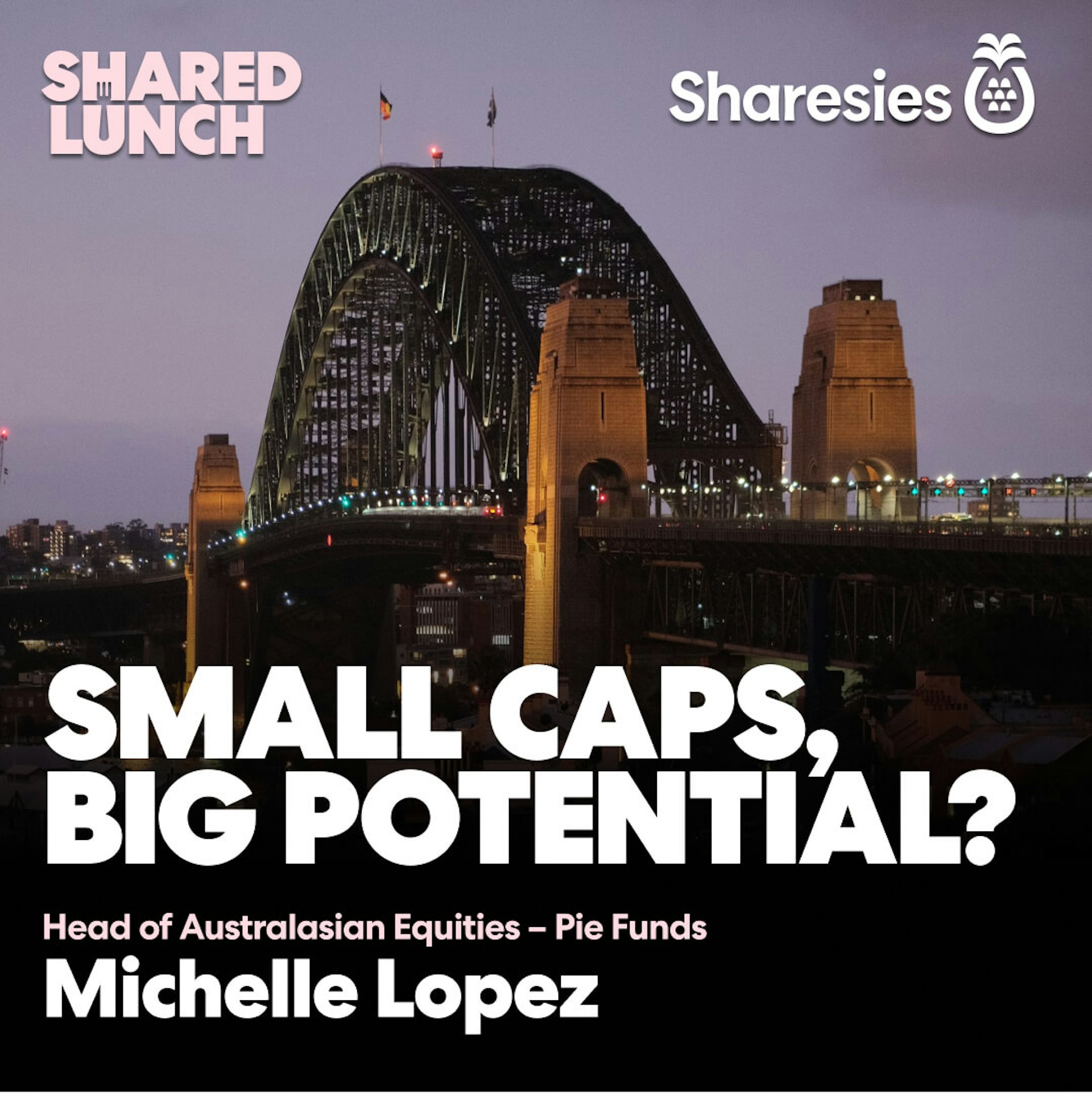The new face of ETFs: how young investors are helping to reshape the market
Let’s explore how younger generations are investing in exchange-traded funds (ETFs) differently, the psychology behind this shift, and what these trends mean for all investors.

If you've noticed more people talking about exchange-traded funds (ETFs) lately, you're not alone. ETFs have evolved from simple index-tracking investments into versatile tools that reflect different values, interests, and strategies—and younger investors are part of the wave redefining what ETF investing can look like.
ETFs explained: understanding their evolution
ETFs trade on exchanges like publicly-listed companies. They typically hold a collection of assets—like shares, bonds, or commodities—and may allow you to gain exposure to entire markets or sectors with a single purchase.
The ETF market has grown significantly in recent years. Industry research shows that as of early 2025, the Australian ETF industry has had a 20-fold increase in market size over the last ten years—reaching over $200 billion AUD in assets under management.
As well as broad market index ETFs, there are now ETFs that focus on narrow industry sectors, specific investment themes, sustainable investing criteria, and even actively managed strategies. This evolution has resonated with some younger investors who see ETFs as building blocks for creating personalised portfolios.
The accessibility of investment platforms like Sharesies has made it easier to invest in ETFs with no minimum investment and competitive fees. Younger investors with limited capital can build diversified portfolios that reflect their investment philosophies.
ETF adoption across generations
Data from Sharesies reveals a clear generational divide in ETF adoption across Australia. Younger investors are leading the charge—Gen Z and Millennials allocate an average of 38% of their investments to ETFs. That's significantly higher than Gen X investors at 27%, and Baby Boomers who put 17% of their money into ETFs.
What's even more telling? Over the past two years, ETF allocations by younger generations have increased by 5 percentage points, rising from 33% to 38%. This suggests their preference for ETFs isn't just a passing trend—it's growing stronger.
Recent industry research reveals similar patterns elsewhere, with Millennials and Gen Z embracing ETFs at much higher rates than older generations. What's particularly interesting is how younger investors use ETFs during market volatility. Data reveals a 49% increase in Gen Z ETF buy orders during market declines exceeding 1%. This suggests they view market dips as buying opportunities— contrasting with older generations, who often reduce market exposure during downturns.
The psychology behind the shift
For many Gen Z and Millennial investors, control and transparency matter. ETFs can provide diversification while letting investors decide which sectors, themes, or approaches to emphasise.
Social values are also influencing investing decisions. Many younger investors may not see their portfolios as merely financial instruments but as expressions of their values and beliefs about the world. Industry research shows that 50% of Gen Z investors consider ESG (Environmental, Social, and Governance) factors when selecting investments.
ETFs can allow investors to "vote with their dollars" by investing in companies and sectors they believe are creating positive change. For younger investors wanting personalisation, the expanding ETF universe may allow more unique portfolios rather than standardised solutions that might have satisfied previous generations.
What young Australians are buying
Sharesies data shows that younger Australian investors have preferences when it comes to ETF selection, with diversification being a key priority.
Broad market foundations
Both Gen Z and Millennial Sharesies investors show a preference for broad market ETFs. Among those investing in ETFs, 39% hold the Vanguard Australian Shares Index ETF, while 24% invest in the iShares S&P 500 ETF AUD. This suggests younger generations believe that diversification is important for long-term success.
Older generations are less committed to these broad market funds—for example, only 32% of Gen X and 25% of Baby Boomers invest in the Vanguard Australian Shares Index ETF.
Values-aligned investing
Beyond diversification, Gen Z and Millennial Sharesies investors show notable interest in ESG-related ETFs.
Their current top 10 ETF choices include:
VanEck Global Clean Energy ETF
BetaShares Climate Change Innovation ETF
iShares Core MSCI World Ex Aus ESG ETF
BetaShares Global Sustainability Leaders ETF
Global outlook and tech focus
Younger investors also have a stronger inclination towards international markets and technology-focused investments compared with older generations.
Current popular choices include:
iShares S&P 500 ETF AUD
Vanguard MSCI Index International Shares ETF
BetaShares NASDAQ 100 ETF
Top exchange-traded funds in 2025
Thematic ETFs
These funds focus on specific themes or trends that could shape our future:
Technology innovation: AI, cloud computing, cybersecurity, digital payments, etc.
Climate solutions: Renewable energy, clean tech, sustainable infrastructure, etc.
Healthcare breakthroughs: Genomics, digital health, biotechnology innovations, etc.
Future consumption: E-commerce, gaming, streaming, the experience economy, etc.
Thematic ETFs help investors capture investment opportunities across traditional sector boundaries. For example, a digital transformation ETF might include tech companies, online retailers, and banks leading in digital payments—all in one package.
ESG-focused ETFs
Environmental, Social, and Governance (ESG) ETFs may allow investors to align their portfolio with their values. These funds screen companies based on sustainability and ethical criteria, such as environmental impact, workplace practices, and social responsibility initiatives.
The rapid growth in ESG-focused investments suggests many investors are moving from maximising returns at any cost to considering the broader impact of their investment decisions.
ETF investing strategies
There are different approaches that investors can take when it comes to investing in ETFs. Let's look at two strategies.
Core-satellite strategy
Think of a portfolio like a solar system. At the centre is the "core"—typically 80-90% of your money in broad market ETFs that can provide stability and diversification. Orbiting around this core are the "satellite" investments—about 10-20% of your portfolio in more specialised ETFs targeting specific geographies, sectors, or opportunities you might believe in, like renewable energy or cybersecurity.
This approach can give investors broad market exposure through the core, with the potential for stronger growth from the targeted satellites.
Tactical allocation
Markets constantly change, and investors may want their portfolio to change with them. Tactical allocation is about adjusting based on economic conditions or an investor’s outlook.
Sharesies data shows this strategy in action. In the first half of 2025, more young Australian investors have been investing in US market and technology-focused ETFs like:
Invesco QQQ
BetaShares NASDAQ 100, and
various S&P 500 ETFs.
Australian broad market ETFs like BetaShares Australia 200 and iShares Core S&P/ASX 200 have also seen increased interest.
ETFs' liquidity support this strategy—enabling investors to adjust their positions more quickly and cost-effectively compared to trading individual shares.
Common misconceptions about ETF investing
As ETFs have evolved, several misconceptions have emerged.
First is that "ETFs are only for passive investors". While ETFs may have started out this way, nowadays, you'll find niche thematic ETFs as well as actively managed approaches.
Another common myth is that "all ETFs are low-cost". While many broad market ETFs offer low fees, thematic ETFs typically charge more, and actively-managed ETFs can be even higher. These differences matter because even small variations in fees add up over time.
Finally, some investors assume "similar ETFs are interchangeable". In reality, two ETFs tracking similar themes can behave differently, with methodologies and holdings that can lead to different results.
Take action with Sharesies
Ready to explore ETF investing? Sharesies offers access to a wide range of exchange-traded funds in Australian and international markets, making it easy to start forming your personalised investment strategy.
Start small, think big: Begin investing with no minimum across different ETFs to create a diversified portfolio over time.
Learn as you go: Use Sharesies' educational resources to deepen your understanding of ETF types and investment strategies.
Invest your way: Create a portfolio that reflects your unique goals, timeline, and values.
Ok, now for the legal bit
Investing involves risk. You might lose the money you start with. If you require financial advice, you should consider speaking with a qualified financial adviser, or seek independent legal, taxation, or other advice when considering whether an investment is appropriate for you. Past performance is not a guarantee of future performance. This content is brought to you by Sharesies Limited (NZ) in New Zealand and Sharesies Australia Limited (ABN 94 648 811 830; AFSL 529893) in Australia. It is not financial advice. Information provided is general only and current at the time it’s provided, and does not take into account your objectives, financial situation, and needs. We do not provide recommendations. You should always read the product disclosure documents available from the product issuer before making a financial decision. Our disclosure documents and terms and conditions—including a Target Market Determination and IDPS Guide for Sharesies Australian customers—can be found on our relevant NZ or Australian website.
Join over 860,000 customers



